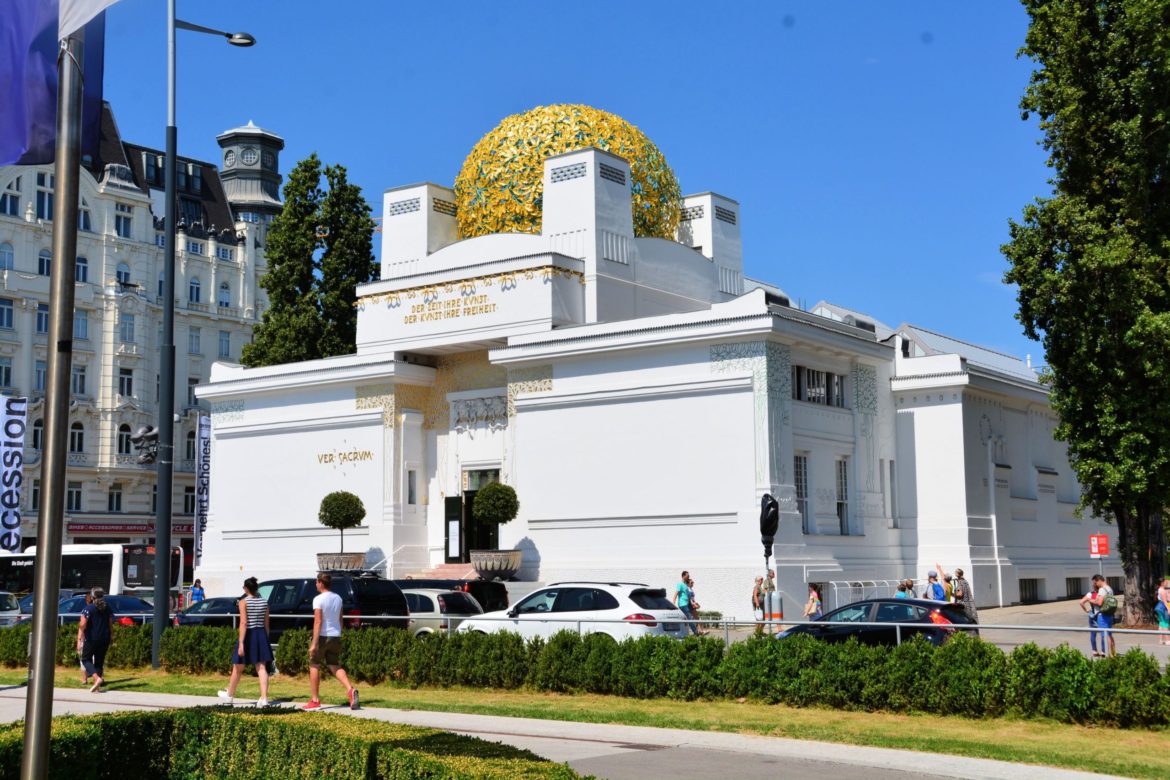
The Vienna Secession Building and Gustav Klimt’s “Beethoven Frieze”
Vienna, Austria is a beautiful city, full of astounding architecture, thanks in part to the rich history of royals who ruled all the way through the second world war. But one of the most interesting buildings by far is the Vienna Secession building, an exhibition hall built in 1898 by Joseph Maria Olbrich, a young architect and student of Otto Wagner’s.
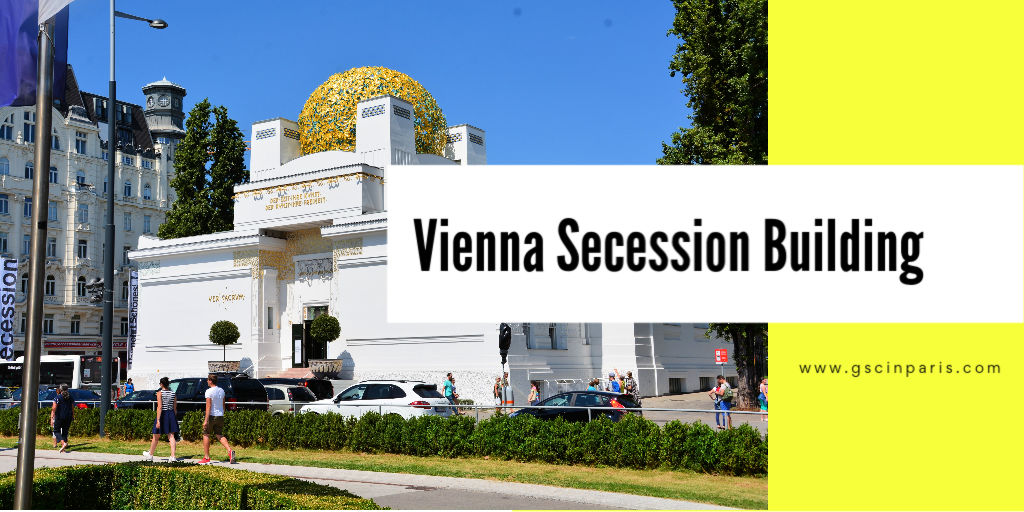
This post contains links that when you click on them, at no cost to you, I a may earn a small commission which helps me to bring you great content.
Why “Secession” Building?
Why “Secession”? This refers to a group of painters, sculptors and architects who seceded from the classical, traditional and long-established art and architecture tradition to form their own group. The style became known as Jugendstil and is considered a branch of Art Nouveau.
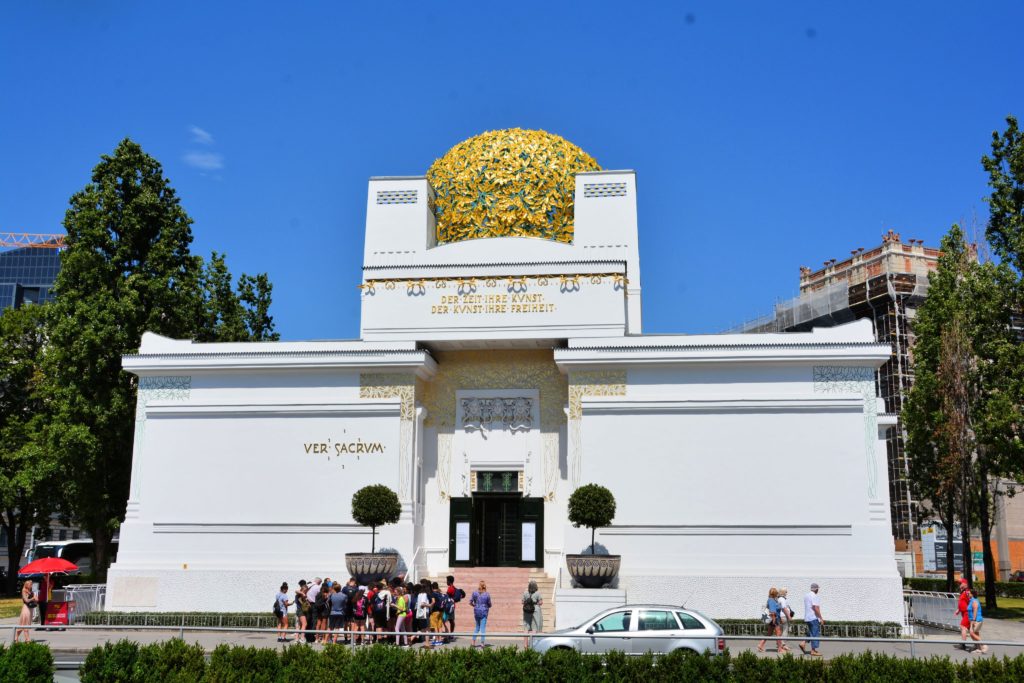
Building Exterior
An oversized sphere made of golden, latticed leaves seems to burst through the stark white building, just as the Secessionists were breaking free of traditional art. Above the entrance is engraved the motto of the Secessionist movement, “To every age its art, to every art its freedom”.
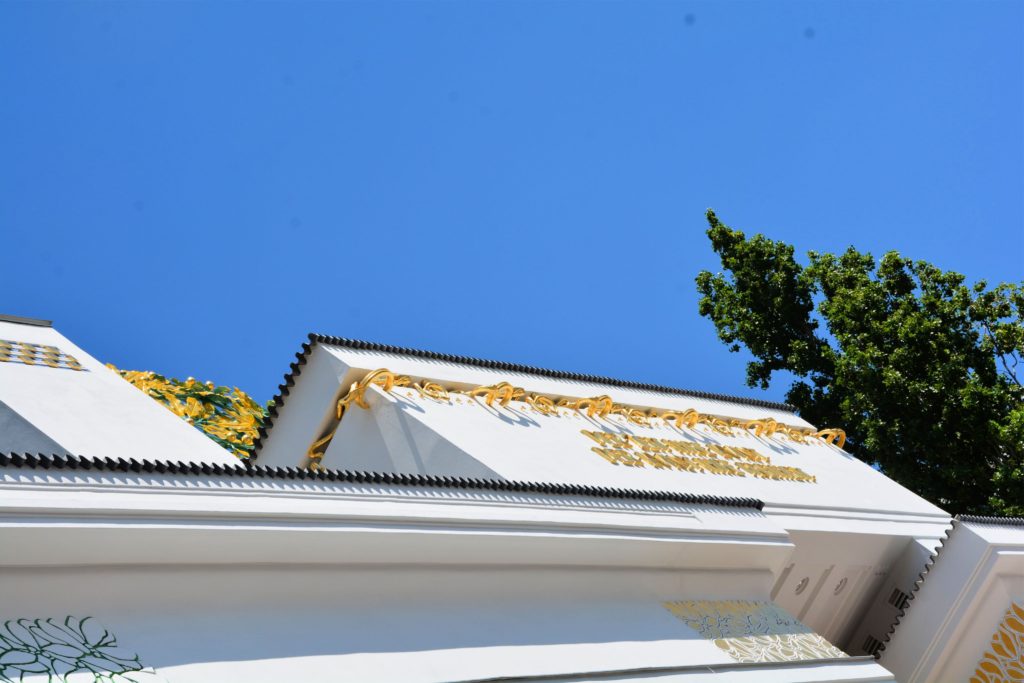
The sculpture of the three gorgons below this represent painting, sculpture and architecture. The Secessionists also had their own publication, Ver Sacrum (Sacred Spring) whose title appears to the left of the entrance. Around the façade of the building are abstracted forms of gold foliage along with thin trunks of trees also outlined in gold.
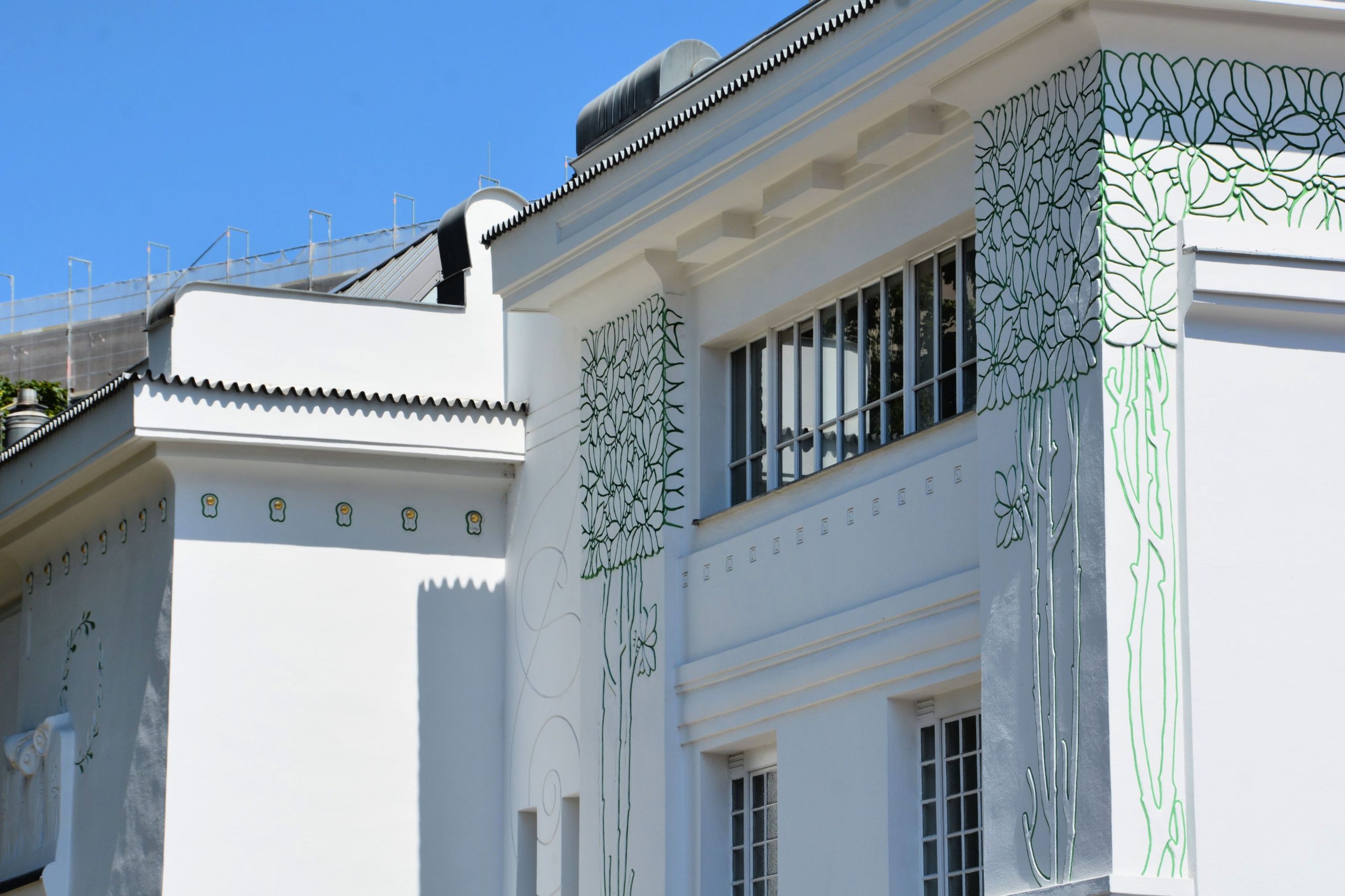
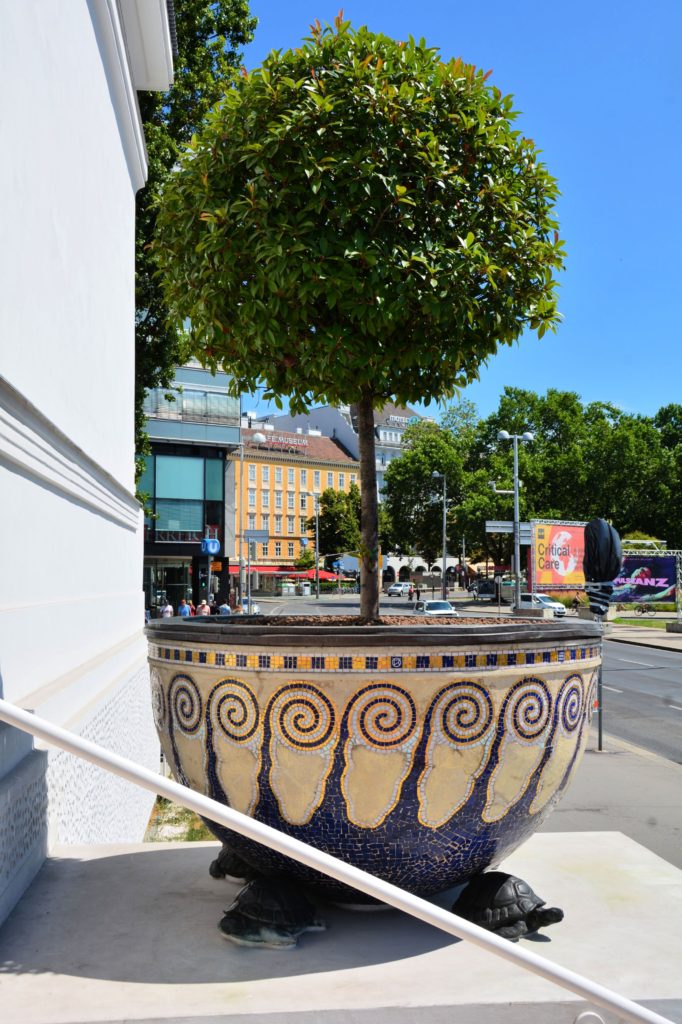
Interior of the Building
Inside the building, skylights light up the versatile display space. Like a Roman/early Christian basilica, the floor plan is divided into three parts: a rectangular central space flanked by side aisles, as if it were a temple for contemporary art. And as contemporary art was ever changing and somewhat unpredictable, the interior space was made to be open and versatile to accommodate this unpredictability. Hence, the Secessionists did not want to privilege one individual style, movement or trend over another.
The Building’s History
During World War II, the building was sadly and severely damaged, (as seen in the photo here, which is on display in the building today) but has been restored wonderfully to its previous state. During my visit, various modern art was on display throughout the building, as well as information regarding its history.
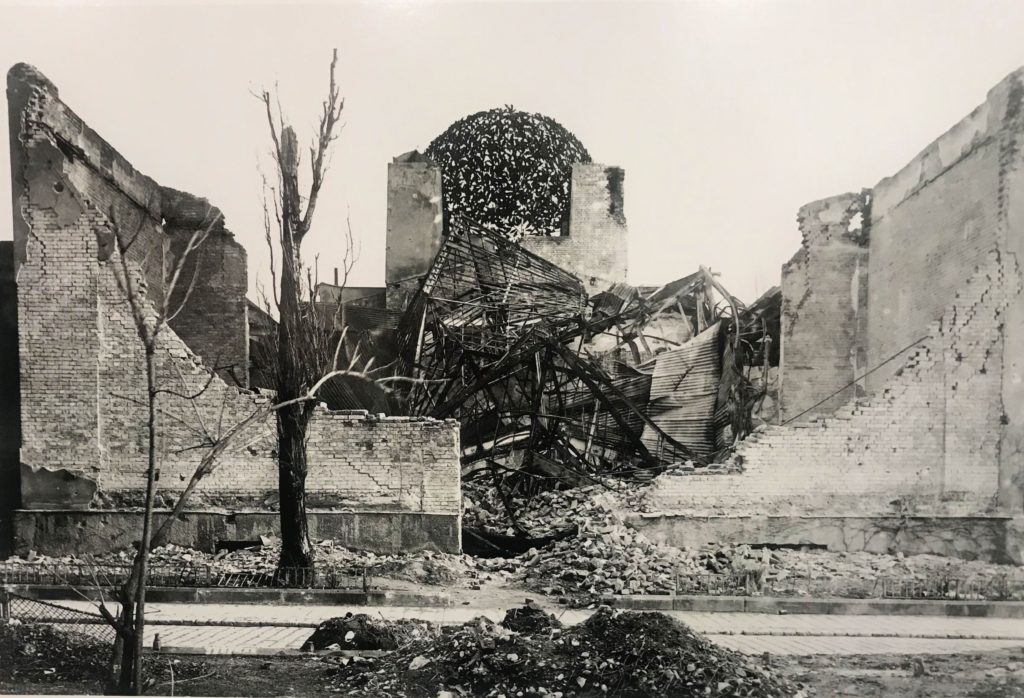
The first president of the Secession was Gustav Klimt and the building features his gorgeous “Beethoven Frieze”, which you can see a video of here.
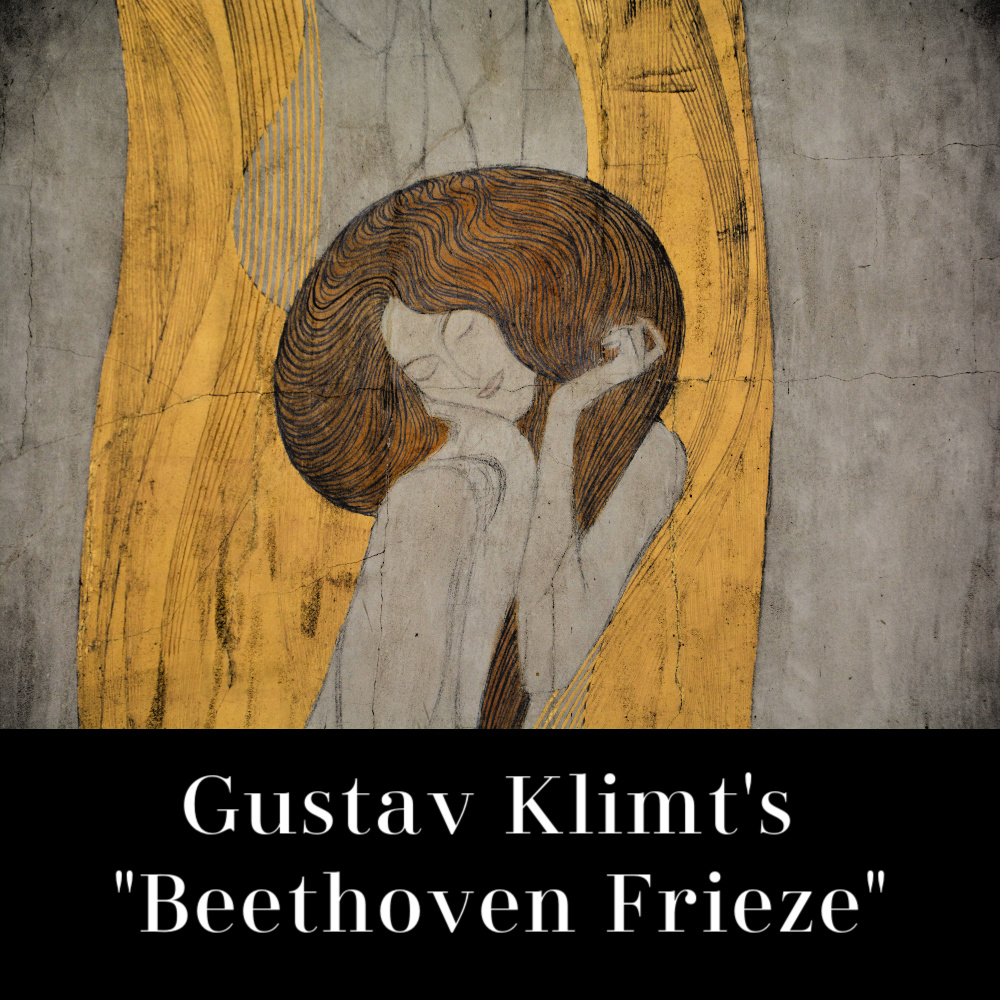
Gustav Klimt’s “Beethoven Frieze” (1902)
Painted by Gustav Klimt for the 14th Secession exhibition in 1902, the “Beethoven Frieze” is a monumental work. Measuring 7 feet tall by 112 feet long, it is painted directly onto the walls of the Secession Building in Vienna, Austria. It tells the tale of three female figures on a quest for fulfillment in a world full of suffering and chaos.
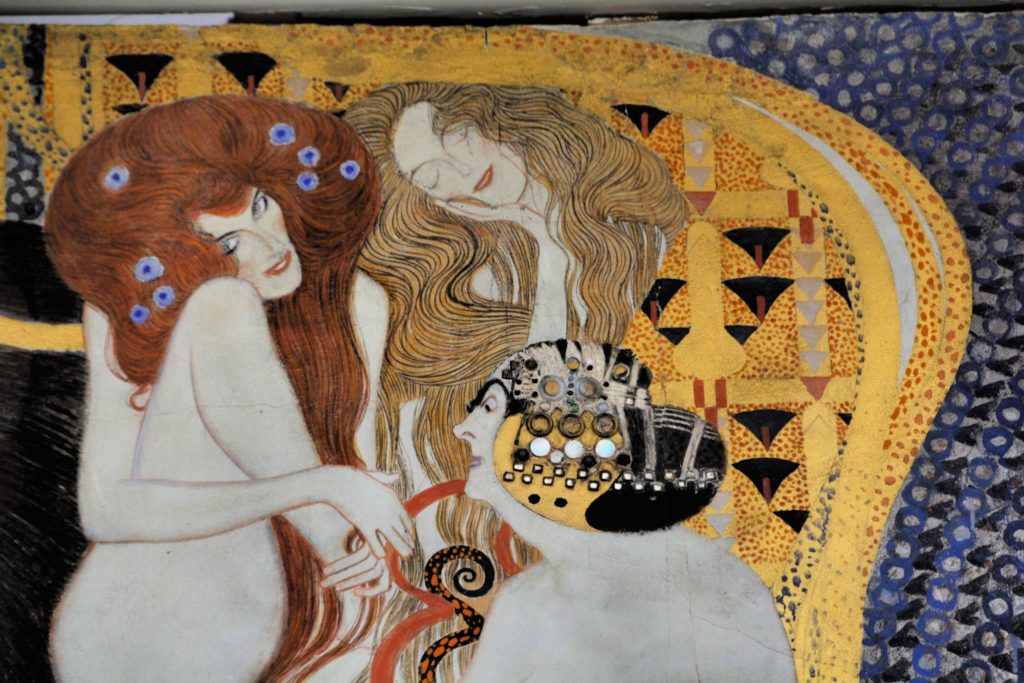
At one point, they rely on an oversized knight in shimmering armor.
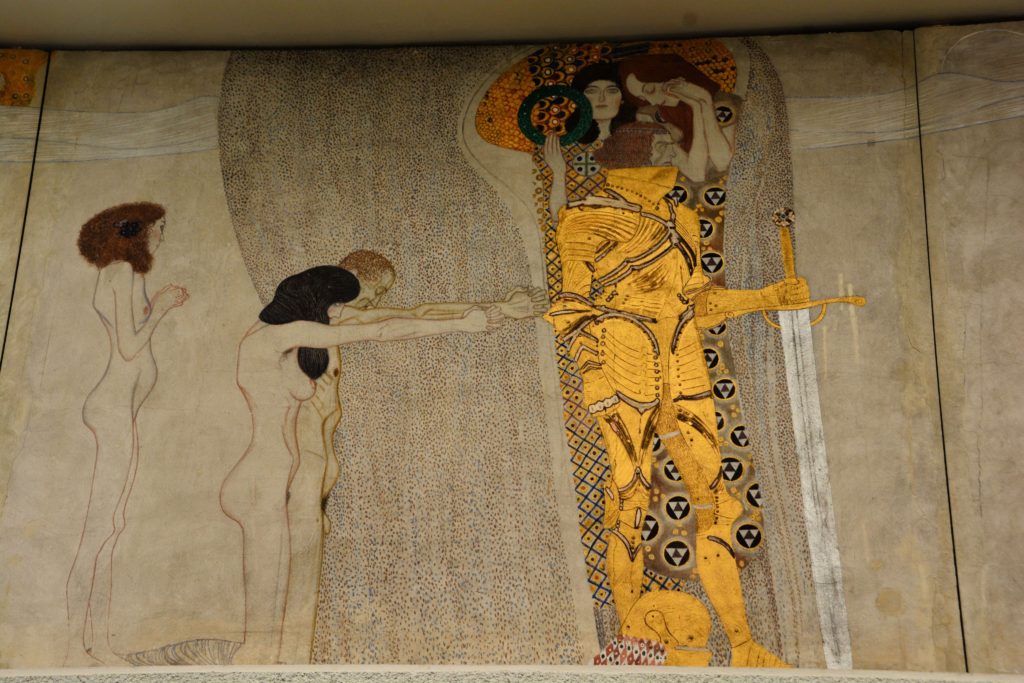
They must encounter a collection of characters with elongated and exaggerated forms, many of which are a nod to Greek mythology. These characters represent disaster and vices such as sickness, madness, death, gluttony and greed. A gorilla portrays the giant, Typhoeus, personifying the typhoid fever which had infected much of Europe, including Vienna in the nineteenth century.
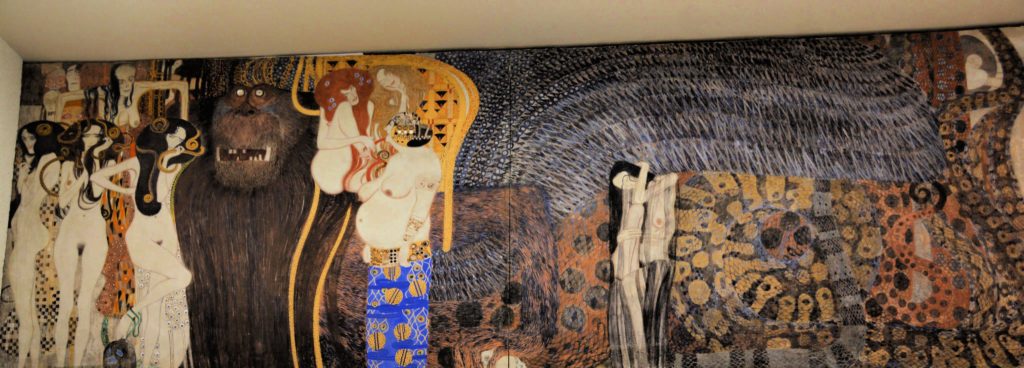
In the end though, they are fulfilled, as represented by a nude female and male figure embracing within a golden aura, while surrounded by a chorus, referring to the end of Beethoven’s Ninth Symphony.
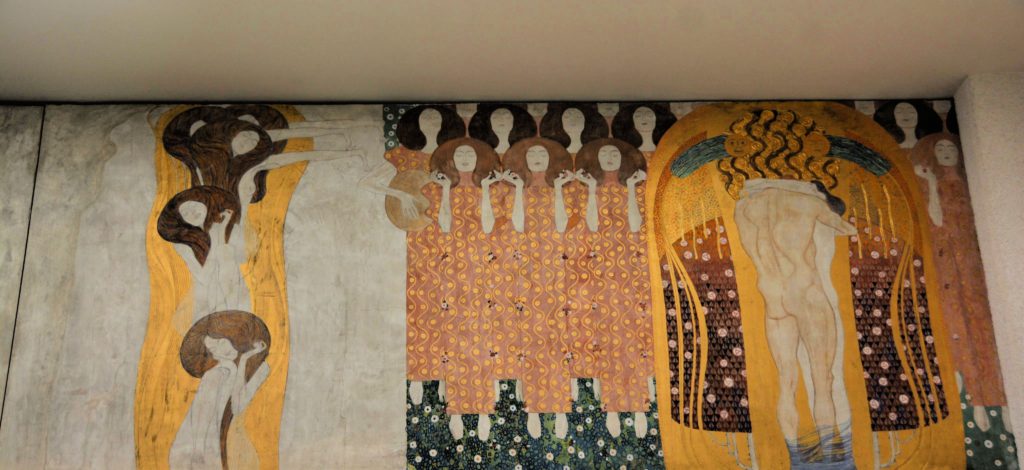
The “Beethoven Frieze”, named after the genius composer and longtime resident of Vienna, is significant in that it represents the Secession artists idea of Gesamtkunstwerk – or total work of art.
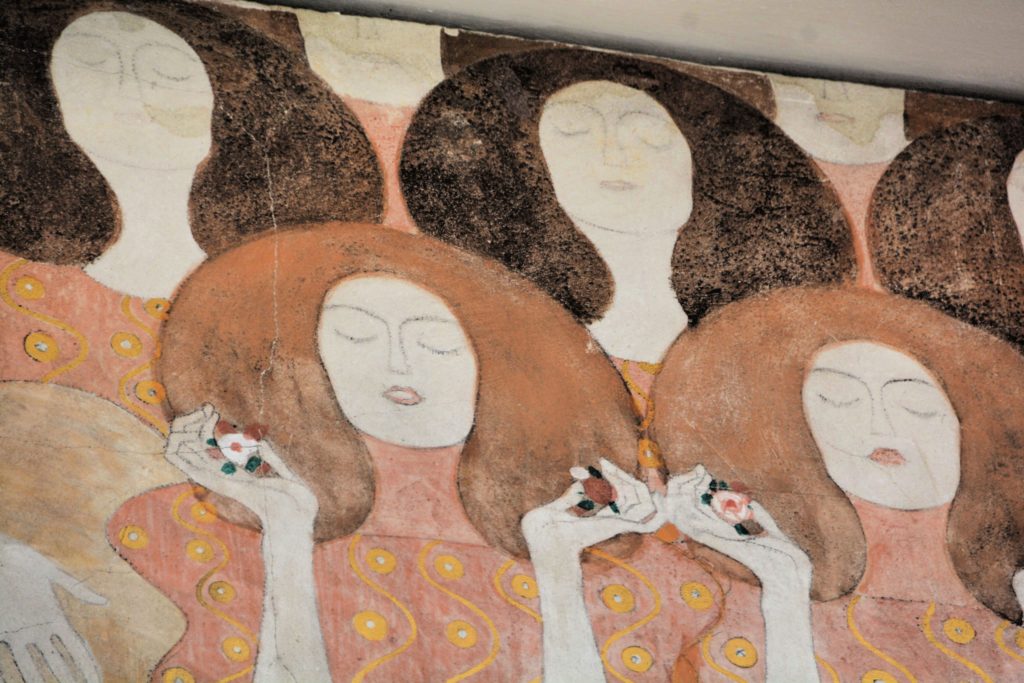
While the figures are painted in a flat, painterly style, the details such as the incorporation of gems into the painted surfaces add to the shimmering effects of the art.
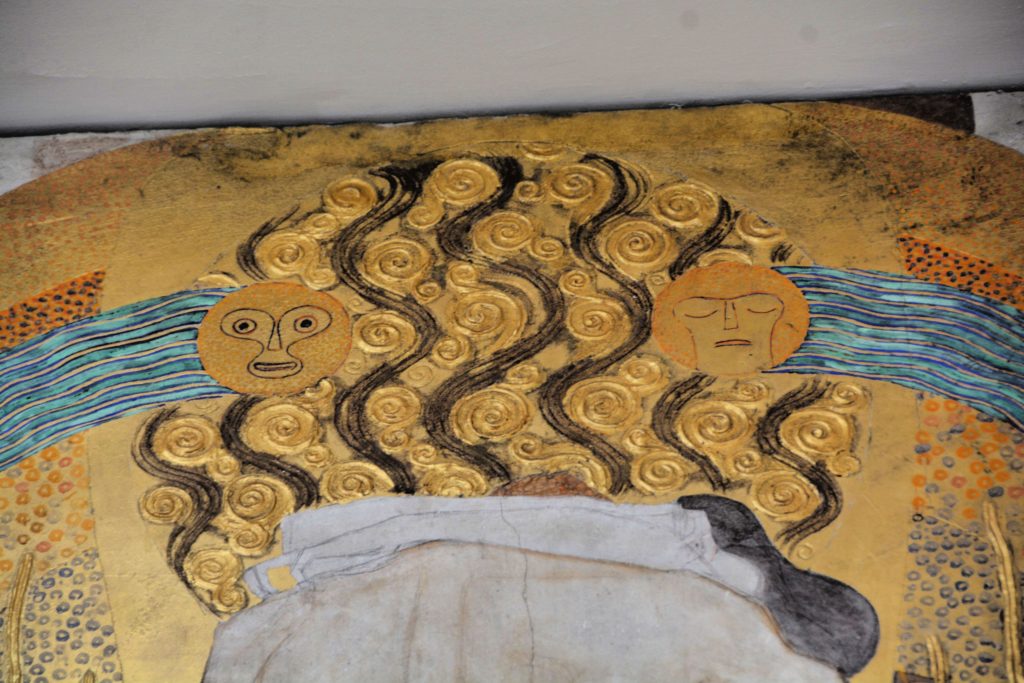
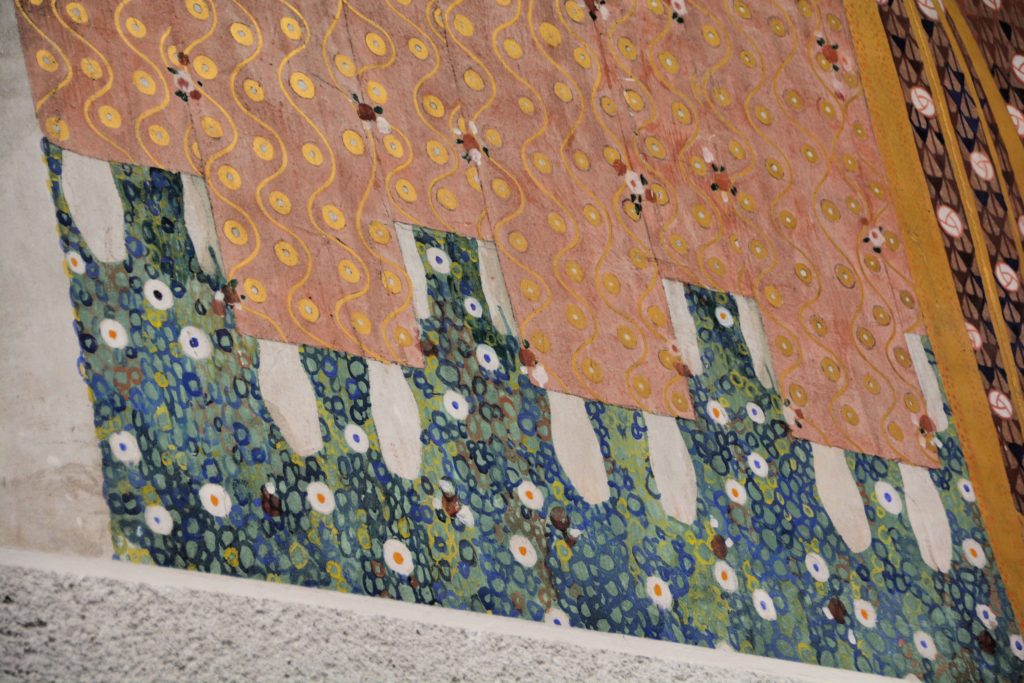
While the Secessionists strove to break away from the classical, they did rely on ancient tropes, as seen in the figures from Greek mythology. In the end, their desire was to create modern art by combining old and new, innovation and classical ideals.
My YouTube recap of Gustav Klimt’s “Beethoven Frieze” is here, with more videos and images:
See my video of the entire frieze here:
Other Posts You Might Enjoy
The Beautiful Architecture of Prague
7 Restaurants to try for your next trip to Paris
10 Books to Bring France to Your Home
The 3 Must-See Towns along Italy’s Amalfi Coast
Touring France: Le Bassin d’Arcachon
A Perfect Day in Saint-Émilion, France
The Château de Chenonceau: the Ladies’ Château
Notre-Dame de Paris: How a Building Can Break Our Heart
Europe Travel Planning Consultation with GSCINPARIS!
Are you planning a trip to Europe, but you don’t know where to begin? Send me an email or a comment below to get started on planning the trip of your dreams. You can find more about me and the services I offer here. Send me an email or leave a comment below!
Art and Architecture of France Facebook Group
If you are interested in following along and interacting with Art and Architecture of France, please join my Facebook Group here.
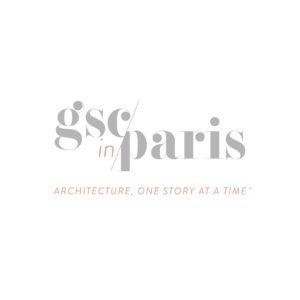
Manon
March 5, 2020 at 3:01 pmNever heard of this the Vienna Secession building, but it looks amazing. Very informative post, thank you for sharing xx Manon | Bondi to Basic
John -Carpediemeire
March 22, 2020 at 5:36 pmVery interesting building. I’ll have to visit next time I’m back. Xmas markets took my attention on my recent visit.